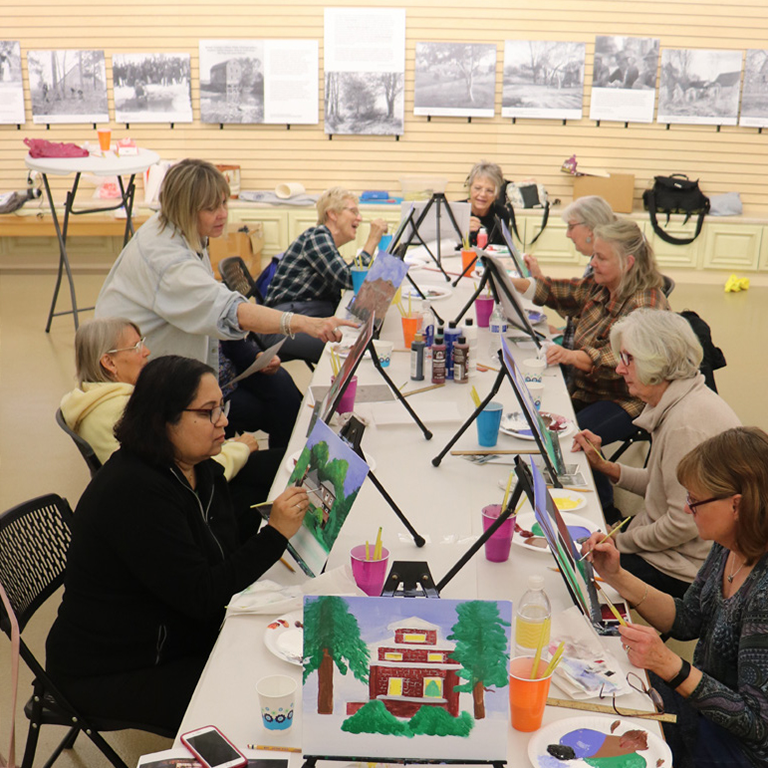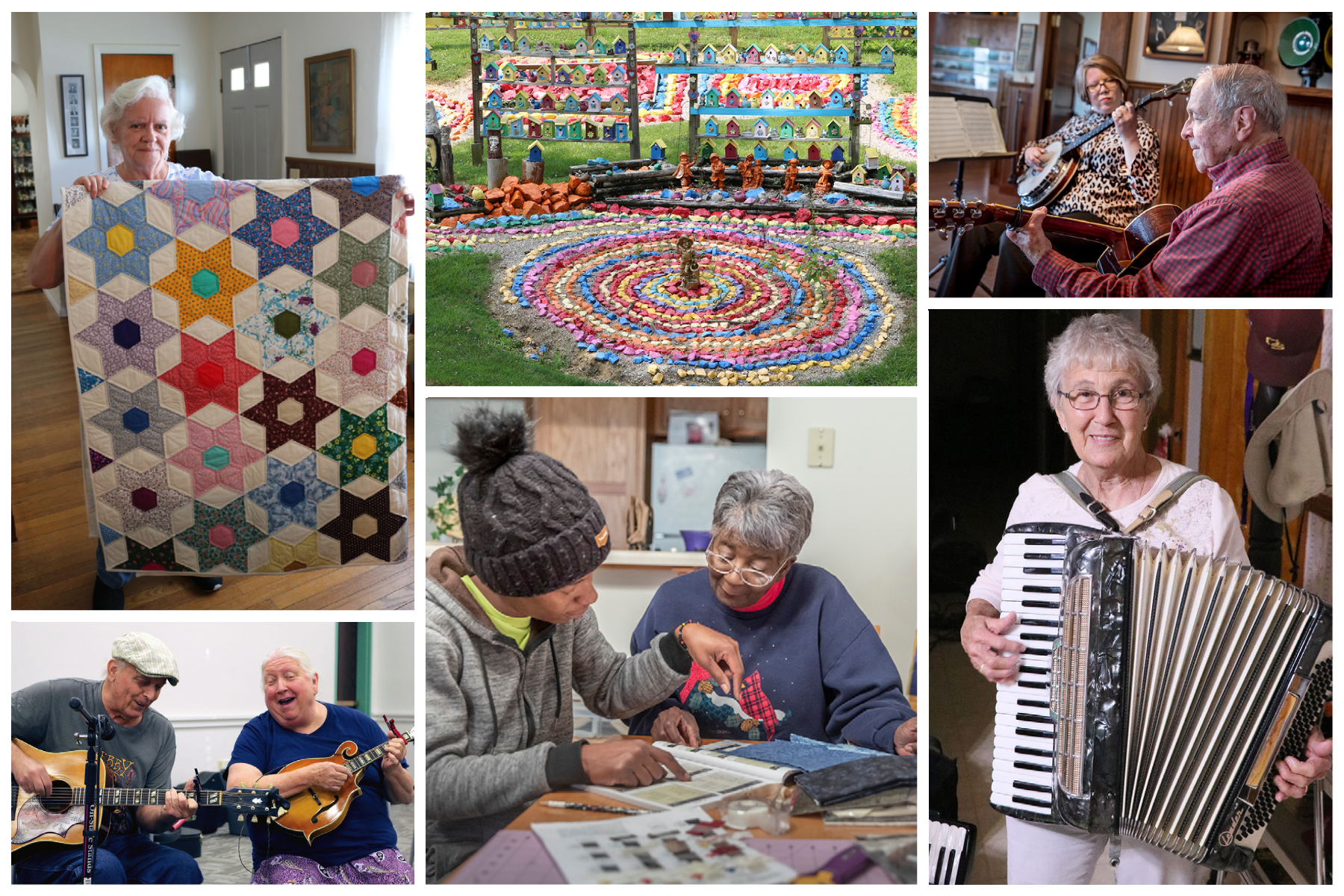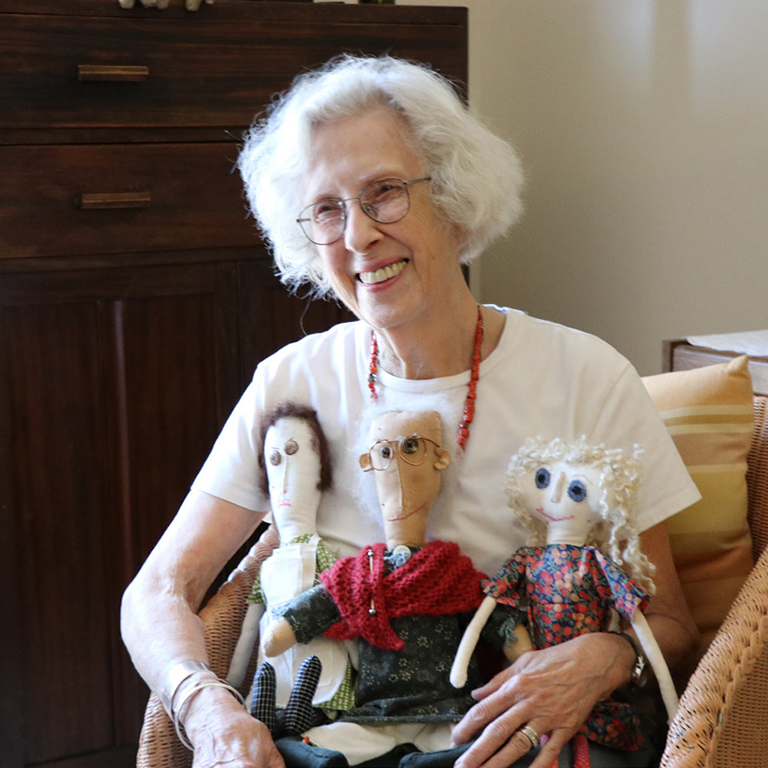Indiana is known for its rich arts heritage, and a new book published by Indiana University's Traditional Arts Indiana program, in collaboration with the IU Center for Rural Engagement, is connecting this history with today's artists and artisans to boost the wellbeing of older adults in Indiana. Memory, Art, & Aging, a 76-page resource book and activity guide contains spotlights on elder artists across the Indiana Uplands region and activities for older adults to reflect on art and aging.
The guide is the culmination of years of research and interviews by TAI director and associate professor of folklore, Jon Kay. “I wanted to make something that was very much about Indiana,” he says. Kay’s work as a folklorist focuses on Indiana, and arts and aging. He’s particularly interested in how traditional arts builds community and improves the quality of life for older adults.
In 2018, Kay was awarded a grant from the National Endowment for the Arts that spurred the research that would result in the creation of the guide. “When I wrote the original grant, Indiana was ranked 46th out of 50 states for its quality of life for older adults, and it’s not gotten necessarily any better,” he says. “I said, ‘we’ve got to do something to try to improve that.’”


Kay and his team began to interview older adult artists while hosting creative aging summits throughout southern Indiana. The summits allowed the artists to come together, exhibit their art, and learn from one another. Kay says he wanted the summits to offer solutions to what gerontologists call the “three plagues” of aging: isolation, boredom, and helplessness. Rather than import something, he says, he used the creative aging summits to find what was working for some community elders and share it with the others. “We looked for the exemplar older adults in a specific place and shared that with other folks.” Some of these examples were collected and compiled into the guide.
Activities in the guide can be done by an individual, but participants are encouraged to complete them as a community with emphasis placed on generativity — passing on knowledge to the younger generation. “That is the cultural compact that we have,” says Kay. “It is a psychological, biological, cultural necessity that older adults have to share a piece of themselves, to try to give something to the next generation.” Some activities include interviewing an elder about their life, a folklife game where participants take turns answering questions about themselves, and compiling favorite family recipes.
The guide showcases a wide range of traditional arts such as making miniatures, carving wood, playing music, and quilting, among others. One of the guide’s featured artists is Jenny Kander, who makes her own dolls and is a poet well-known in Bloomington having hosted several poetry radio shows for many years. “Jon made his respect for art and aging so clear and enormously encouraging ever since I’ve known him,” Kander says. Art is important, she says, and it becomes more important as she gets older. “It keeps me in touch with who I am and what I can give others. It literally enlivens me,” she says.
Activities in the guide can be done by an individual, but participants are encouraged to complete them as a community with emphasis placed on generativity — passing on knowledge to the younger generation. “That is the cultural compact that we have,” says Kay. “It is a psychological, biological, cultural necessity that older adults have to share a piece of themselves, to try to give something to the next generation.” Some activities include interviewing an elder about their life, a folklife game where participants take turns answering questions about themselves, and compiling favorite family recipes.
The guide showcases a wide range of traditional arts such as making miniatures, carving wood, playing music, and quilting, among others. One of the guide’s featured artists is Jenny Kander, who makes her own dolls and is a poet well-known in Bloomington having hosted several poetry radio shows for many years. “Jon made his respect for art and aging so clear and enormously encouraging ever since I’ve known him,” Kander says. Art is important, she says, and it becomes more important as she gets older. “It keeps me in touch with who I am and what I can give others. It literally enlivens me,” she says.

We have been given a gift and the joy and responsibility to share it with the young. Keep creating, there are such rich fields to plow.
Jenny Kander
Kander also recognizes the need to share art and techniques with future generations. “We have been given a gift and the joy and responsibility to share it with the young,” she says. “Keep creating, there are such rich fields to plow.”
“People are bringing beauty, they’re bringing identity, they’re bringing self-expression wherever it is they are,” says Kay. “This is what makes your places distinctive, it’s what makes your community cohesive, it’s what gives you a sense of pride and validation.”
Many of TAI’s first run of 5,000 copies will be distributed to libraries throughout Indiana. The guide is free, and a printed copy can be requested through this form, and a PDF version is available on the TAI website here.
“People are bringing beauty, they’re bringing identity, they’re bringing self-expression wherever it is they are,” says Kay. “This is what makes your places distinctive, it’s what makes your community cohesive, it’s what gives you a sense of pride and validation.”
Many of TAI’s first run of 5,000 copies will be distributed to libraries throughout Indiana. The guide is free, and a printed copy can be requested through this form, and a PDF version is available on the TAI website here.

